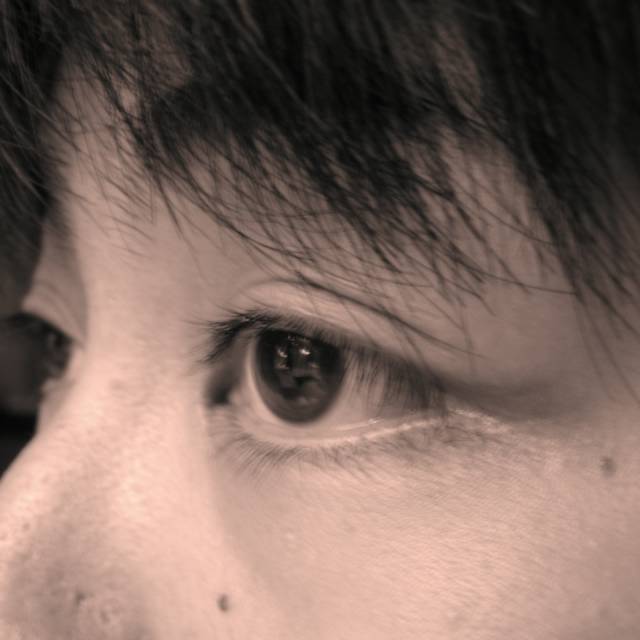day4-an outstanding example of an exceptionally large collective ego: Asian Art Museum of Nice
 The white wall of the Asian Art Museum had the grayish cast from the gathering darkness of the evening. It stood with clean grace, its curved walls interconnecting with each other, over a small artificial pond in a corner of a large botanical garden by the coast. Tens of water fouls unfamiliar to us paddled around gaily on the water, some with baby blue cheek on chocolate brown feather, others with pink beaks streaked with a thin red line. Upon entering the museum, a moss green Japanese pottery on a bamboo mat, holding two twigs of azalea with three magenta flowers, carefully and exquisitely arranged, greeted us.
The white wall of the Asian Art Museum had the grayish cast from the gathering darkness of the evening. It stood with clean grace, its curved walls interconnecting with each other, over a small artificial pond in a corner of a large botanical garden by the coast. Tens of water fouls unfamiliar to us paddled around gaily on the water, some with baby blue cheek on chocolate brown feather, others with pink beaks streaked with a thin red line. Upon entering the museum, a moss green Japanese pottery on a bamboo mat, holding two twigs of azalea with three magenta flowers, carefully and exquisitely arranged, greeted us.
“This sculpture of an important Indonesian god, with the breathtakingly intricate decoration on its heavenly attire, marks the very crest of the aesthetic sophistication of the era, approaching the universal and eternal beauty” proudly announced the recorded voice of the audio tour device, which came with the admission. The sculpture was indeed beautifully done. “This Japanese tea kettle was made by a group of Buddhist monks renowned for their outstanding use of Japanese lacquer. Its simple yet graceful curve along with the fine balance of vermillion and black are an sublime tribute of the highest point of this art,” said the device in a deep, solemn voice. Maybe. “This rare example of the late-12th century Indian tapestry, combining, the delicate refinement of the middle eastern tapestry and the bold and lively expression typical of the native India, presents the pleasurable fruit the sublimation of two distinguished, yet radically different cultures,” continued the Authority. Everything exhibited in the museum seemed to represent a sublime example of a highly developed, incredibly sophisticated, technologically amazing, evidence of past human activities throughout Asia. Throw in some description of the pleasing intermarriage of diverse cultures, liberally sprinkling tongue-biting adjectives, and anybody could compose the script for the device. The audio guide’s endless, energetic emphasis on the “exceptionally high” quality of their collections made me feel as if I had been stepping into, and being smothered by, the collective ego of the museum, proudly showing off its aesthetic judgment and impeccable taste. “Notice the beautiful fluid line of the firm buttock of this young Buddhist monk. It is one of the best examples of the blooming Thai culture of this era,” demanded the authoritative voice. Sure he had an attractive, “firm buttock!” It was probably the first and last time I hear a museum guide mention a sculpture’s butt, however adorable it might be.
Apart from the egotistical exaggerations of the audio guide, however, the presentation of the collection was, in itself, so tasteful and sophisticated, with fine attention to details, that being in the museum was a sheer pleasure. The ample circular room in the center, with plenty of light coming from the large windows facing onto the pond, artifacts arranged with plenty of distant between one another, on pedestals of square glass plates on simple metal support, the precise lighting that accentuates the beautiful contour of the faces—the museum’s ego wasn’t huge for no reason. It was obvious that none of the exhibits was there just because it was the easiest example of a culture of a given time and space. All that was there was there because of both their representative quality and their aesthetic high achievement. The museum wasn’t falling into the common trap of trying to show every historical and artistic stage of Asia. It bravely and haughtily defines its role as a museum of fine Asian art, refusing to be a general museum of Asian artifacts of all levels of quality. Its assertive ego could be somewhat overwhelming and intrusive, but it did succeed in what it intends to be—a provider of an experience of beauty and refinement. Everything from the space itself to the selection of exhibits, to the beautiful carmine paper bag of the gift shop was tuned to that effect, to perfection.
Two pelicans were meticulously glooming their feathers on a pedestal of a spotlight in the pond. Marble passageway on the water, circling around the square building in the center, gently took us onto the roof of the museum with pots of gnarled oriental trees and panels of horrible Tibetan gods. Leaves of nearby bamboo bushes made wet rustling sounds against the coastal breeze. The garden below seemed to be worth exploring, with all the different water fouls and large glass conservatory, but the closing time was only five minutes away. It was time to go back.
On the bus back to the town, we were pleasantly filled with satisfaction, having been in an absolute refinement, simple yet graceful. I was thankful to Patrick’s persistence on visiting the museum, which, to be honest, formerly irritated me to a considerable extent, for if not for that, I would have abandoned the idea of pouring so much effort into an obscure museum in an inconvenient location out of town.
Asian Art Museum in Nice
Originally uploaded by uBookworm.


0 Comments:
Post a Comment
<< Home